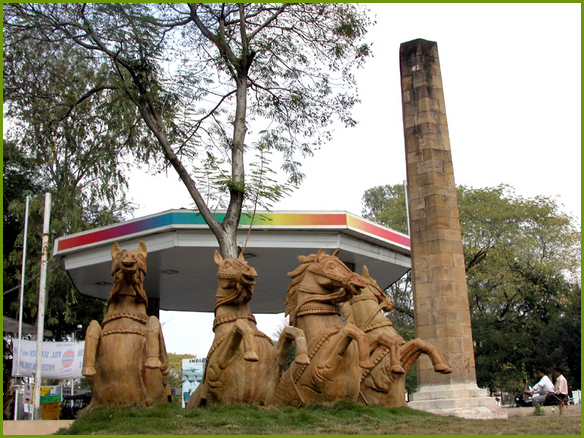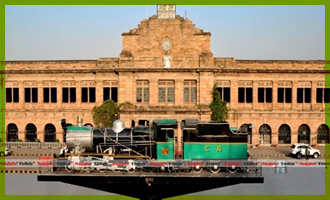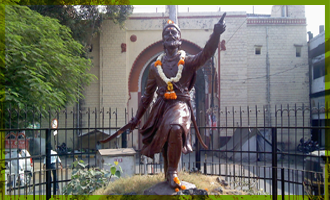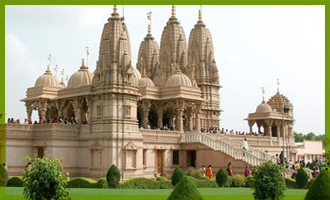NAGPUR HISTORY

The first reference to the name Nagpur is found in a 10th century copper-plate inscription discovered at Devali in the neighbouring Wardha district. The inscription is a record of grant of a village situated in the visaya (district) of Nagpura-Nandivardhana during time of Rastrakuta king Krsna III in the Saka year 862 (940 CE). However, tradition ascribes the founding of Nagpur to Bakht Buland, a prince of the Gond kingdom of Deogarh in the Chhindwara district. In 1743, the Maratha leader Raghoji Bhonsle of Vidarbha established himself at Nagpur, after conquering the territories of Deogarh, Chanda and Chhattisgarh by 1751. After Raghoji's death in 1755, his son and successor Janoji was forced to acknowledge the effective supremacy of the Maratha Peshwa of Pune in 1769. Regardless, the Nagpur state continued to grow. Janoji's successor Mudhoji I (d. 1788) came to power in 1785 and bought Mandla and the upper Narmada valley from the Peshwa between 1796 and 1798, after which Raghoji II (d. 1816) acquired Hoshangabad, the larger part of Saugor and Damoh. Under Raghoji II, Nagpur covered what is now the east of Maharashtra, Chhattisgarh, Orissa, and parts of Madhya Pradesh and Jharkhand.
In 1803 Raghoji II joined the Peshwas against the British in the Second Anglo-Maratha War. The British prevailed, and Raghoji was forced to cede Cuttack, Sambalpur, and part of Berar. After Raghoji II's death in 1816, his son Parsaji was deposed and murdered by Mudhoji II. Despite the fact that he had entered into a treaty with the British in the same year, Mudhoji joined the Peshwa in the Third Anglo-Maratha War in 1817 against the British, but was forced to cede the rest of Berar to the Nizam of Hyderabad, and parts of Saugor and Damoh, Mandla, Betul, Seoni and the Narmada valley to the British after suffering a defeat at Sitabuldi in modern-day Nagpur city. Mudhoji was deposed after a temporary restoration to the throne, after which the British placed Raghoji III the grandchild of Raghoji II, on the throne. During the rule of Raghoji III (which lasted till 1840), the region was administered by a British resident. In 1853, the British took control of Nagpur after Raghoji III died without leaving an heir. From 1853 to 1861, the Nagpur Province (which consisted of the present Nagpur region, Chhindwara, and Chhatisgarh) became part of the Central Provinces and Berar and came under the administration of a commissioner under the British central government, with Nagpur as its capital. Berar was added in 1903.



Nagpur Junction Railway Station is one of the oldest and busiest stations in Maharashtra.In 1867, Mumbai was connected to Nagpur.
In 1881, Nagpur was connected to Kolkata via the Nagpur State Railway of Chhattisgarh. It was officially inaugurated on January 15th, 1925
by the then Governor Sir Frank Sly. Prior to 1924, the Nagpur Railway Junction Station was located east of its current location.
TATA, one of the most respected industrial houses in India, started the country's first textile mill
at Nagpur, formally known as Central India Spinning and Weaving Company Ltd. The company was popularly known as "Empress Mills" as it
was inaugurated on 1st January 1877, the day queen Victoria was proclaimed Empress of India. Nagpur was a scene of significant political
activity during India's freedom struggle. The city hosted two annual sessions of the Indian National Congress and the Non Co-Operation
Movement was launched in the Nagpur session of 1920. After Indian Independence in 1947, Central Provinces and Berar became a province of
India, and in 1950 became the Indian state of Madhya Pradesh, again with Nagpur as its capital. However when the Indian states were
reorganized along linguistic lines in 1956, the Nagpur region and Berar were transferred to Bombay state, which in 1960 was split between
the states of Maharashtra and Gujarat. Nagpur is the only Indian city to have lost the status of a state capital during the reorganizaton
of states. If the demand for a separate state of Vidarbha is granted in future, the city is set to regain its former status as state
capital.